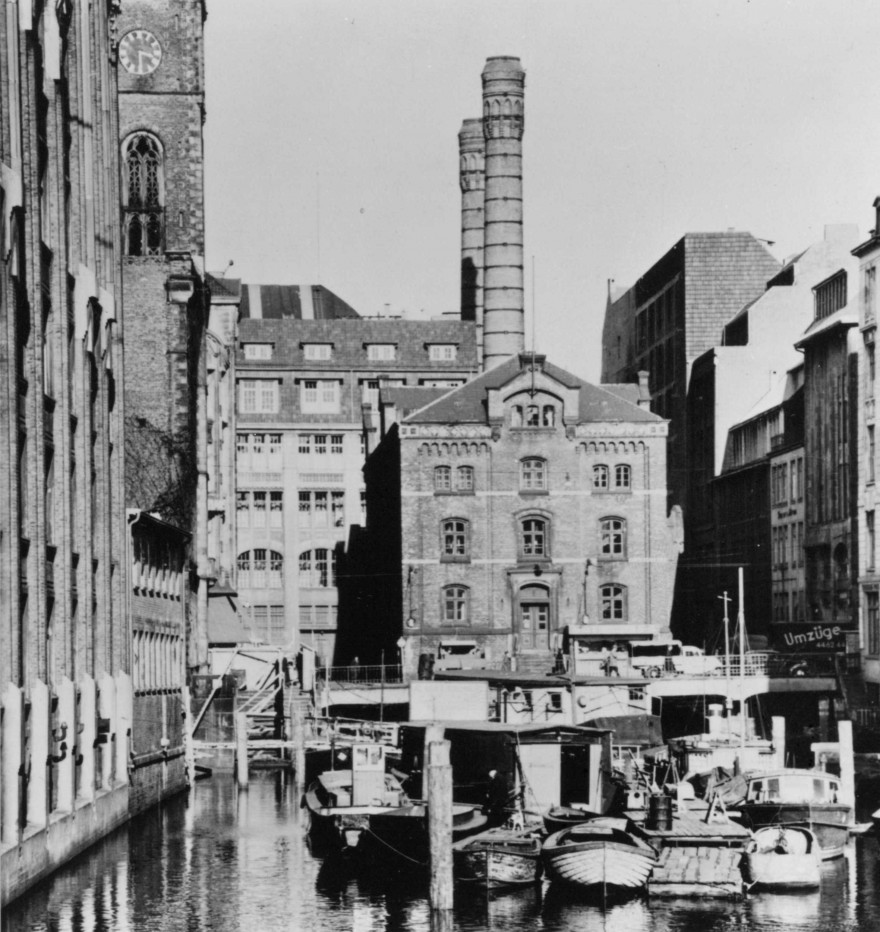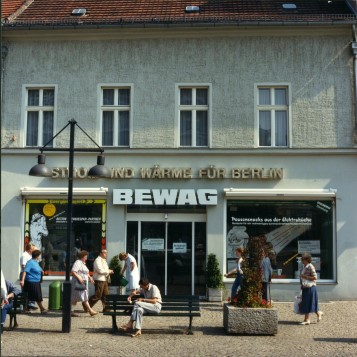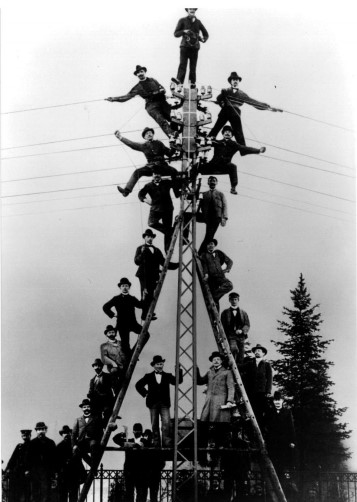How it all began (HEW – Hamburg)
Electrification and electricity supply in Hamburg is closely associated with Hamburgische Electricitäts-Werke (HEW). The company has always been a reliable supplier of energy in Hamburg - from 1894 right down to today.

Poststraße - first power station Year: 1895 | ID: VF000516
The harbour drives electrification forward
Even in the 19th century, Hamburg was already a pioneer of technical innovation. As such, the city was electrified at a comparatively early date. As early as 1879, electric lighting was installed on two Hamburg steam boats, and the first wharf had received electric arc lights. Thanks to this artificial lighting, Hamburg was able to consolidate its position as Europe's all-round fastest transshipment harbour, as ships could now be loaded and unloaded around the clock.
From 1882, the first 16 arc lights illuminated the town hall square. In 1884, in order to have a direct influence on this development, the Hamburg senate bought the testing facilities that it had so far rented. A few months later, the first electricity meter was installed in the Börsenkeller wine restaurant. For the public, electricity was prohibitively expensive, but it was already experiencing notable growth in the commercial sector.
By the end of the 1880s, two power stations were supplying Hamburg with electricity: the city water mill (Stadtwassermühle) and the new Sandthorquai harbour power station. In 1891/92, harbour operations underwent a technical revolution: the world's first electric cranes were put into service, and handling capacity increased enormously.
HEW's early years
The Hamburg senate realised that money could be made from supplying electricity, but was wary of the entrepreneurial risk. For that reason, it welcomed a plan by wealthy Hamburg citizens to found a power utility with private capital. On 15 March 1894, Hamburgische Electricitäts-Werke AG (HEW) came into existence. A supply contract concluded between the city and HEW obliged the operators to pay a generating fee to the city, as well as to operate and modernise the existing plants.
Demand for electricity in public life increased. In 1917, HEW put its first large-scale power plant into service in Tiefstack. Its four chimneys remained the company's symbol for decades to come. At the end of the 1920s, the grid was so heavily loaded that HEW tried to reduce peak demand by means of special tariffs. One strategy that turned out to be particularly successful was the newly-introduced night storage tariff, which was ideal for the new hot water storage heaters.
Destruction and reconstruction
Despite severe damage, HEW managed to maintain electricity supply to Hamburg during World War II. At the end of the war, only one power plant was able to generate electricity at full capacity. Fuel shortages and damage to the grid made reliable supply impossible. Available capacity was only a quarter of pre-war capacity. HEW quickly produced a plan for repairs, new construction and expansion. In 1949, HEW's electricity generation once again reached pre-war levels.
In order to be able to satisfy the fast-increasing demand for electricity, HEW built new power plants. As well as conventional electricity generation, it also made use of new types of technology: it put the first wind power plant into operation on the grounds of the Tiefstack power station. With the construction of the pump storage plant at Geesthacht in 1958, HEW set another milestone in the use of renewable energy.
On the night of 16/17 February 1962, Hamburg was devastated by flooding. More than 300 people died, hundreds of thousands were cut off by the floodwater, and electricity supply collapsed. Thanks to the tireless efforts of more than 1,700 HEW employees, the electricity supply was restored in as little as 25 hours.



